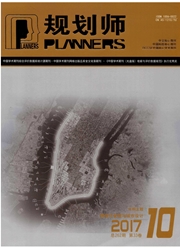

 中文摘要:
中文摘要:
文章指出分类结构是用地分类研究的基础,传统等级性结构存在单一性和封闭性的局限,借鉴语言学的方法采用多维结构可为解释土地利用的复杂性提供方法论的基础。多维用地分类体系理论包含指示、评价和规定三种模式。规划过程的三个关键环节"调查—分析—规划"为语言学的三种模式提供了逻辑性的对应关系。在三种模式的基础上,结合用地分类的多重维度及分类体系的平行结构和空间等级,可构建出一个系统完整且具开放性的多维用地分类体系。通过探讨多维理论在用地分类标准及城乡规划各个阶段的应用前景,可为未来用地分类体系和城乡规划制度的改革提供新的思路。
 英文摘要:
英文摘要:
The paper argues that structure is the bedrock of land use classification, and current classification structure is singular and closed. Multi-dimensional structure in linguistics presents an illumination for the complex land use in methodology. It includes order, appraisal, and regulation models, and they are logically correspondent to the three steps in planning: investigation, analysis, plan. With multiple dimensions, parallel structure, and spatial hierarchy of land use, an open and integrate classification system can be established. The paper discusses the prospect of multi-dimensional theory in land use classification and in different phases of urban planning.
 同期刊论文项目
同期刊论文项目
 同项目期刊论文
同项目期刊论文
 期刊信息
期刊信息
